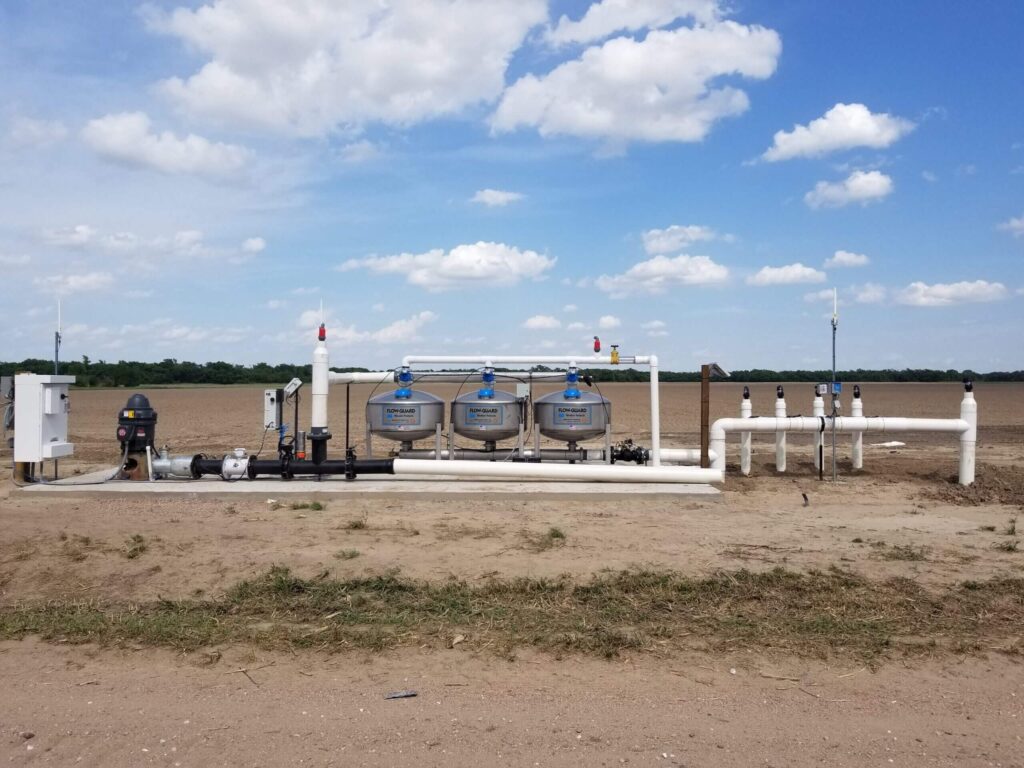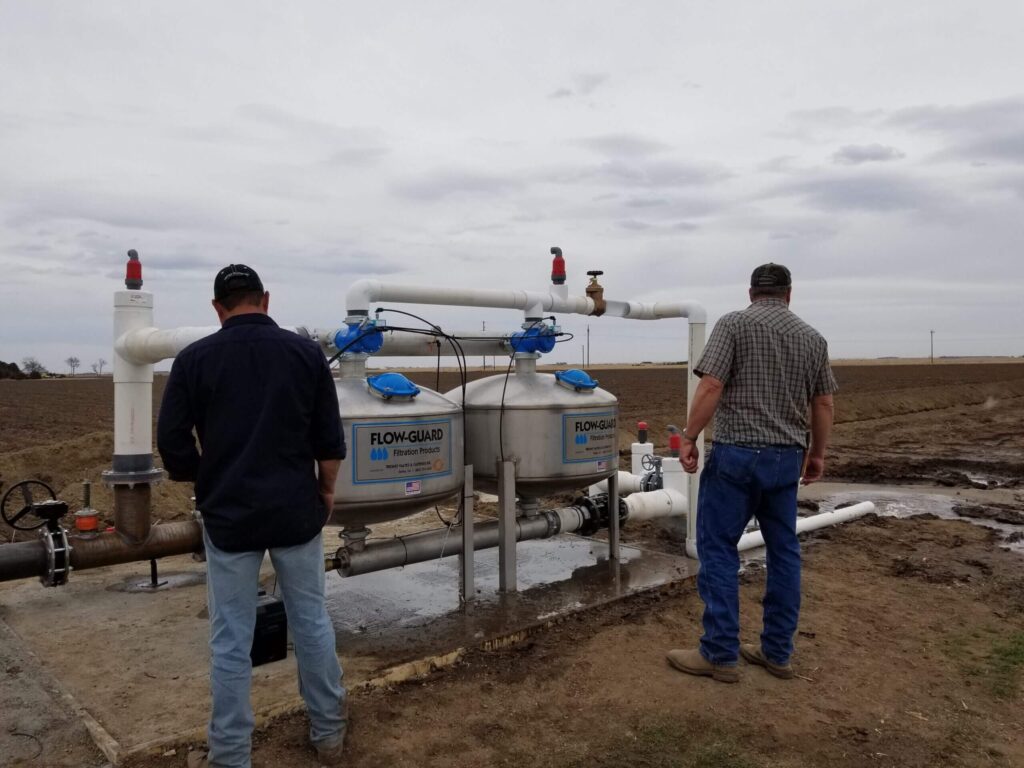Is Subsurface Drip Irrigation Worth the Investment? ROI Insights for Farmers
Is Subsurface Drip Irrigation Worth the Investment? ROI Insights for Farmers
Every season, farmers face a series of critical decisions that impact their yield, profitability, and long-term sustainability. Among the most significant of these is how to manage water resources. Efficient irrigation is not just about conserving water; it’s about delivering the right amount at the right time to maximize crop health and output. Subsurface Drip Irrigation (SDI) has emerged as a powerful solution, but it comes with a considerable upfront cost. This often leads to the crucial question: is SDI worth the investment?
This guide offers a comprehensive look at the return on investment (ROI) for SDI systems. We will explore the tangible benefits, from significant water savings to increased crop yields, and weigh them against the initial costs and maintenance needs. By breaking down how to calculate ROI and offering expert insights, this post will provide the information you need to determine if SDI is the right strategic move for your farm’s future.
What is Subsurface Drip Irrigation (SDI)?
Subsurface Drip Irrigation is an advanced irrigation method that delivers water and nutrients directly to the root zone of plants. Unlike traditional surface irrigation or even surface drip systems, SDI involves burying drip lines (or dripperlines) 12 to 18 inches below the soil surface. These lines contain emitters spaced at specific intervals, which slowly release water, ensuring it reaches the roots with minimal loss.
This targeted approach fundamentally changes how water is used in agriculture. By placing water precisely where it’s needed, SDI systems eliminate common sources of water waste, such as surface runoff, wind drift, and evaporation. This precision allows for highly efficient water and fertilizer application, creating an optimal growing environment that can lead to healthier plants and more substantial yields. Companies specializing in these systems, like Western Irrigation, design them to last for decades, making them a long-term fixture of a farm’s infrastructure.

The Financial Upside: Key Benefits of SDI
Adopting an SDI system can lead to significant financial gains through improved resource management and crop performance. These benefits accumulate over time, directly contributing to a strong return on investment.
Remarkable Water Conservation
One of the most compelling advantages of SDI system is its exceptional water efficiency. Traditional methods like flood or furrow irrigation can lose up to 50% of water to evaporation and runoff. Sprinkler systems are more efficient but still susceptible to wind and evaporation, often losing 15-30% of their water.
SDI systems, on the other hand, can achieve water application efficiency rates of over 95%. By delivering water below the surface, evaporation is nearly eliminated. This efficiency means you can irrigate more land with the same amount of water or maintain current acreage with significantly less water. For farms in arid regions or areas with strict water allocations, these savings are not just a financial benefit—they can be the key to operational viability. This reduction in water usage also translates directly to lower pumping costs, as less energy is required to move water from its source to the fields.
Boosted Crop Yields and Quality
Delivering water and nutrients directly to the root zone creates a consistently ideal environment for plant growth. This process, known as fertigation, allows for precise nutrient management, spoon-feeding the crop exactly what it needs throughout its growth cycle. The results are often dramatic:
- Increased Yields: Studies and farmer testimonials consistently report yield increases of 10% to 30% or more for crops like corn, cotton, alfalfa, and tomatoes when switching to SDI. The stable moisture levels reduce plant stress, allowing them to focus energy on producing fruit and biomass.
- Improved Crop Quality: Uniform water and nutrient distribution leads to more consistent crop quality. Fruits and vegetables are often larger and more uniform in size, fetching higher prices at market.
- Reduced Weed Growth: Because the soil surface remains dry, weed germination is significantly suppressed. This reduces competition for water and nutrients, allowing the primary crop to thrive.
Significant Reduction in Labor Costs
Automated SDI systems drastically reduce the manual labor associated with irrigation. Traditional methods often require workers to move pipes, open and close gates, or monitor surface water flow. With SDI, irrigation schedules can be programmed and executed automatically, often manageable from a smartphone or computer.
This automation frees up valuable time and labor resources, which can be reallocated to other critical farm tasks like pest management, equipment maintenance, or harvest preparation. The reduction in weed pressure also lowers the cost and labor associated with mechanical or chemical weeding, adding another layer of savings. Over the life of the system, these accumulated labor savings can amount to a substantial portion of the initial investment.
Weighing the Challenges: Potential Drawbacks of SDI
While the benefits are powerful, it’s essential to consider the challenges associated with SDI. A clear understanding of these drawbacks is necessary for making a fully informed decision.
High Initial Investment
The most significant barrier to adopting SDI is the upfront cost. The price can range from $1,500 to over $3,000 per acre, depending on factors like field size and shape, soil type, water source, and the level of automation desired. This investment includes the cost of dripperlines, filters, pumps, valves, and professional installation. For large-scale operations, the total can easily run into hundreds of thousands of dollars. While government grants and financing options can help offset this, it remains a major capital expenditure that requires careful financial planning.
Ongoing Maintenance Requirements
SDI systems are not “set it and forget it.” To ensure longevity and optimal performance, regular maintenance is crucial. The primary concerns are clogging and damage.
- Clogging: Emitters can become clogged by mineral deposits (like calcium and iron), algae, or sediment. This requires a robust filtration system and periodic flushing of the lines. In some cases, acid or chlorine treatments may be necessary to clear blockages.
- Pest and Root Intrusion: Rodents like gophers can chew on the buried lines, causing leaks that are difficult to locate and repair. Additionally, some crops may experience root intrusion, where roots grow into the emitters, blocking water flow.
- Equipment Damage: Farm equipment can damage the buried lines if not operated carefully, especially during deep tillage.
Proper system design, installation, and a diligent maintenance schedule can mitigate these risks, but they represent an ongoing commitment of time and resources.

Calculating the ROI for Your Farm
To determine if subsurface drip irrigation (SDI) is a worthwhile investment, you need to conduct a thorough ROI analysis. This involves projecting the costs and benefits over the expected lifespan of the system, which is typically 20 years or more.
Key Factors and Metrics to Consider
- Total Initial Cost: Get a detailed quote from a reputable installer like Western Irrigation. This should include all components, installation, and any necessary upgrades to your water source or pumping plant.
- Annual Operating Costs: Estimate the yearly costs for maintenance, repairs, electricity for pumping (factoring in potential savings), and any chemical treatments.
- Increased Revenue from Higher Yields: Project the potential increase in revenue based on conservative yield improvement estimates for your specific crops and local market prices.
- Cost Savings: Calculate your annual savings from:
- Water: (Gallons saved per year) x (Cost per gallon).
- Labor: (Hours saved per year) x (Hourly labor rate).
- Fertilizer: Reduced application rates due to higher efficiency.
- Weed Control: Lower herbicide and cultivation costs.
- Payback Period: This is the time it takes for the accumulated savings and increased revenue to equal the initial investment. A shorter payback period indicates a more attractive investment.
- Formula: Payback Period = Initial Investment / (Annual Net Benefit)
- Annual Net Benefit = (Increased Revenue + Cost Savings) – Annual Operating Costs
Let’s imagine a simple scenario for a 100-acre farm. If the SDI system costs $200,000 ($2,000/acre) and generates an annual net benefit of $40,000 through increased yields and reduced costs, the payback period would be five years ($200,000 / $40,000). For the remaining 15+ years of the system’s life, that $40,000 becomes annual profit.
Expert Insights on SDI Implementation
To provide a deeper perspective, we spoke with a lead agronomist from Western Irrigation, a company at the forefront of SDI design and installation.
“The conversation around SDI has shifted,” the agronomist explains. “It’s no longer just about saving water. It’s about maximizing the value of every drop. We work with farmers to conduct detailed soil and water analyses before we even design a system. The goal is to create a prescription for success.”
When asked about the biggest mistake farmers make, the answer was clear: “Skimping on design and installation. A poorly designed system will be a constant headache. Clogging, uneven water distribution, and leaks will eat away at your potential ROI. It’s critical to partner with experts who understand the local soil, water quality, and crop needs. A well-designed system should perform reliably for decades with proper maintenance, turning that initial investment into a long-term profit center.”

Making the Decision: Is SDI Right for Your Farm?
Answering this question requires a hard look at your specific circumstances. Consider these questions:
- What is your water situation? If you are in a water-scarce area, face rising water costs, or have pumping limitations, SDI’s efficiency is a powerful argument.
- What crops are you growing? High-value crops like vegetables, fruits, and nuts often have a faster payback period due to the significant impact of yield and quality improvements.
- What is your soil type? SDI performs exceptionally well in sandy soils, where traditional irrigation leads to significant water loss through deep percolation.
- Are you prepared for the management commitment? A successful SDI system requires a new level of management, including regular monitoring and maintenance.
If the numbers from your ROI calculation look promising and you are ready for a more intensive management approach, SDI could be a transformative investment for your operation.
The Future of Precision Agriculture
Subsurface Drip Irrigation is more than just an efficient way to water crops; it’s a foundational piece of modern precision agriculture. The ability to control the root zone environment with such accuracy opens the door to data-driven farming practices that were once unimaginable. As water resources become more strained and the demand for food grows, technologies like SDI will no longer be a luxury but a necessity.
Making the switch requires a significant investment of capital and a commitment to learning new management techniques. However, for many farmers, the long-term returns—in the form of higher yields, lower operating costs, and enhanced sustainability—make it one of the smartest investments they can make in the future of their farm.
